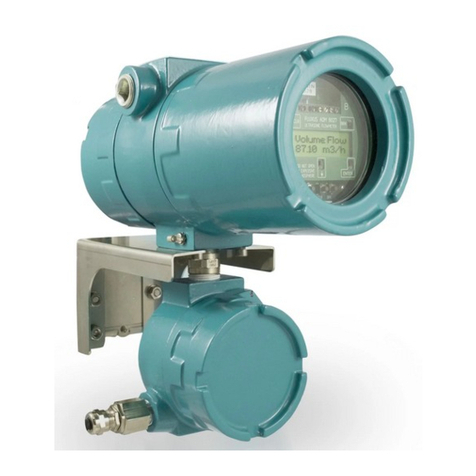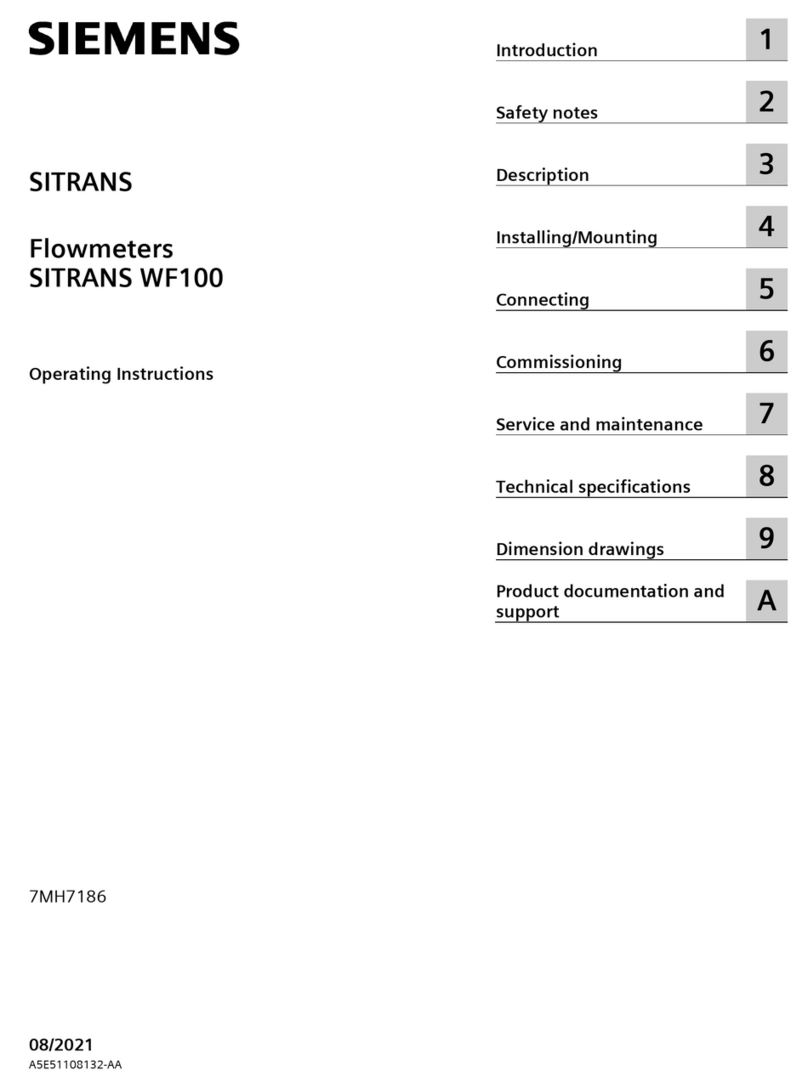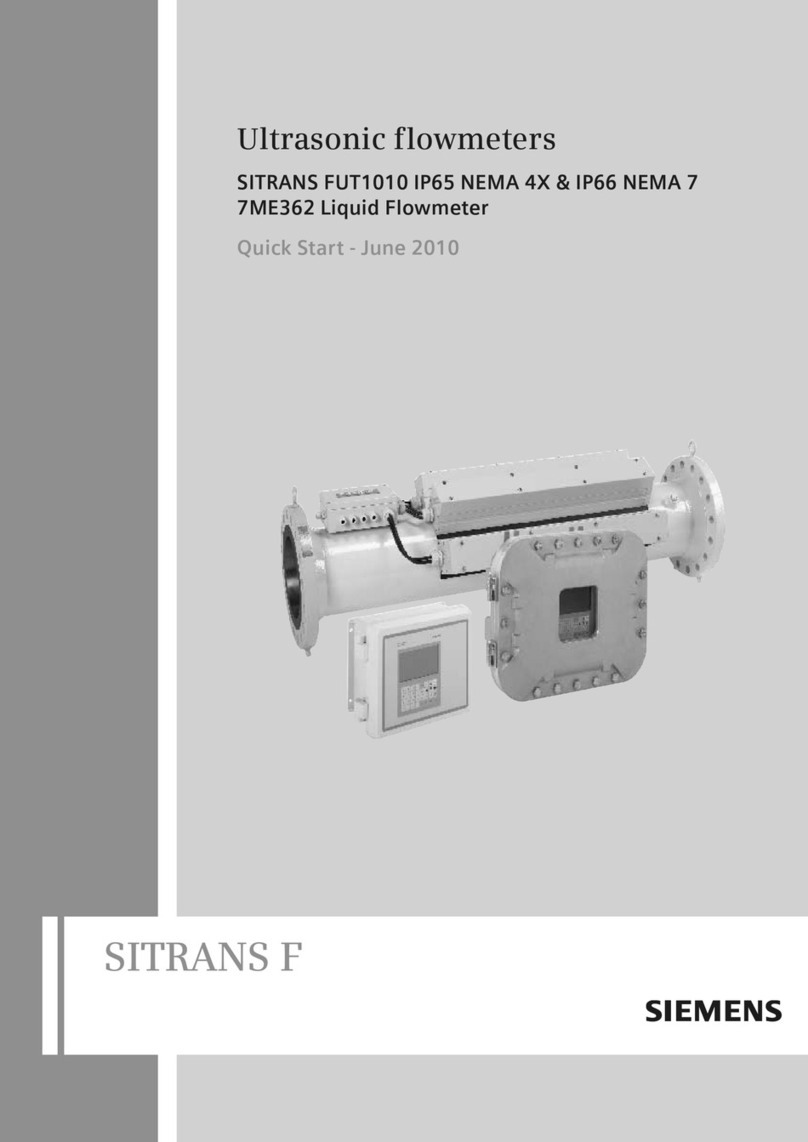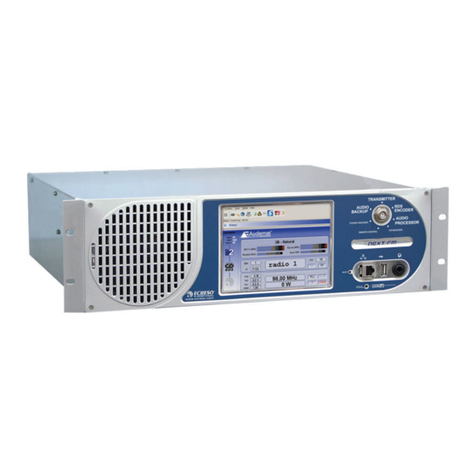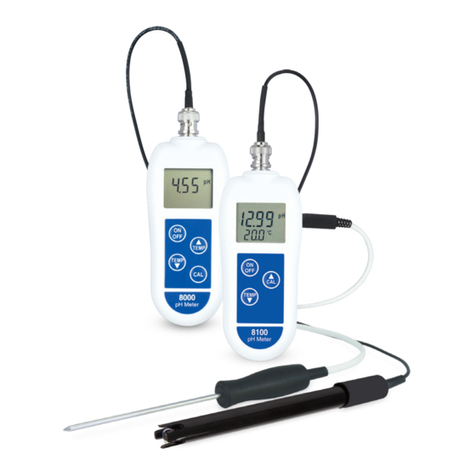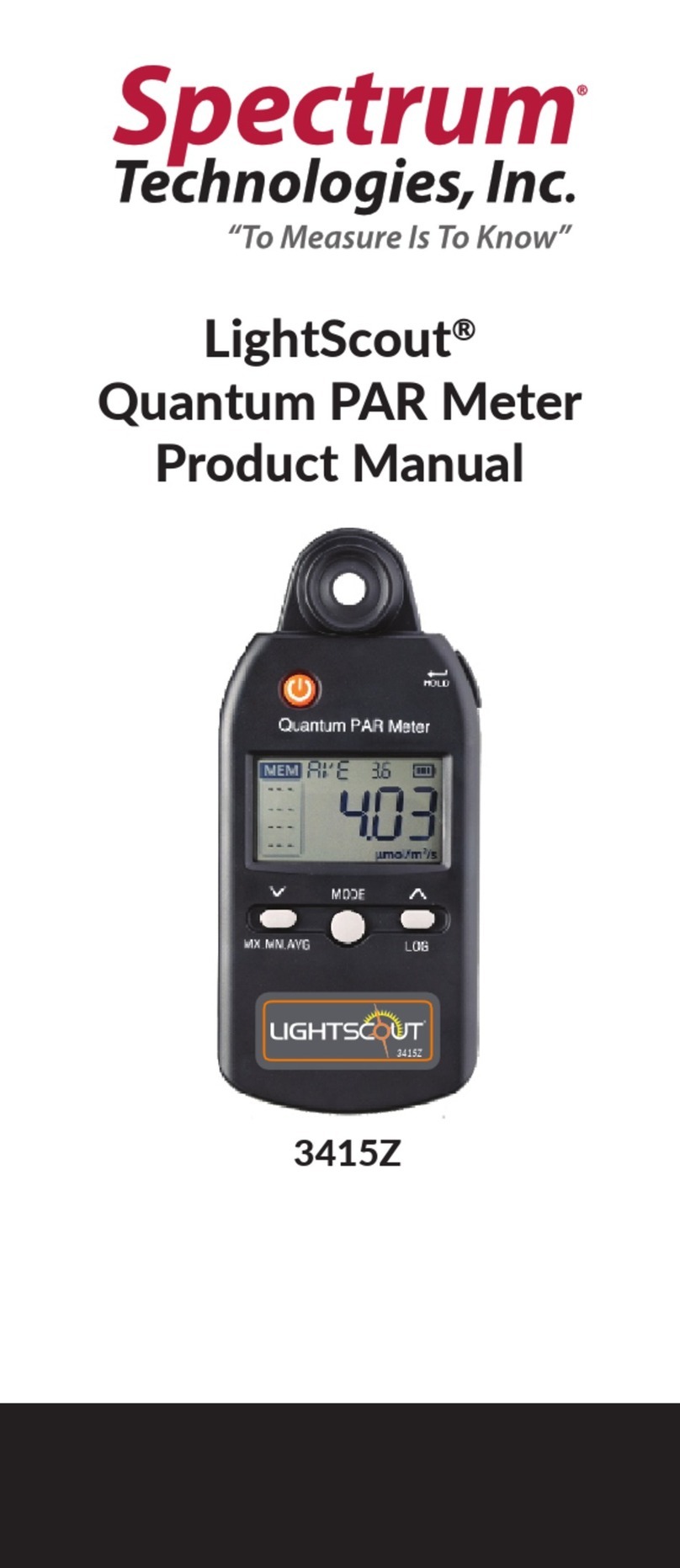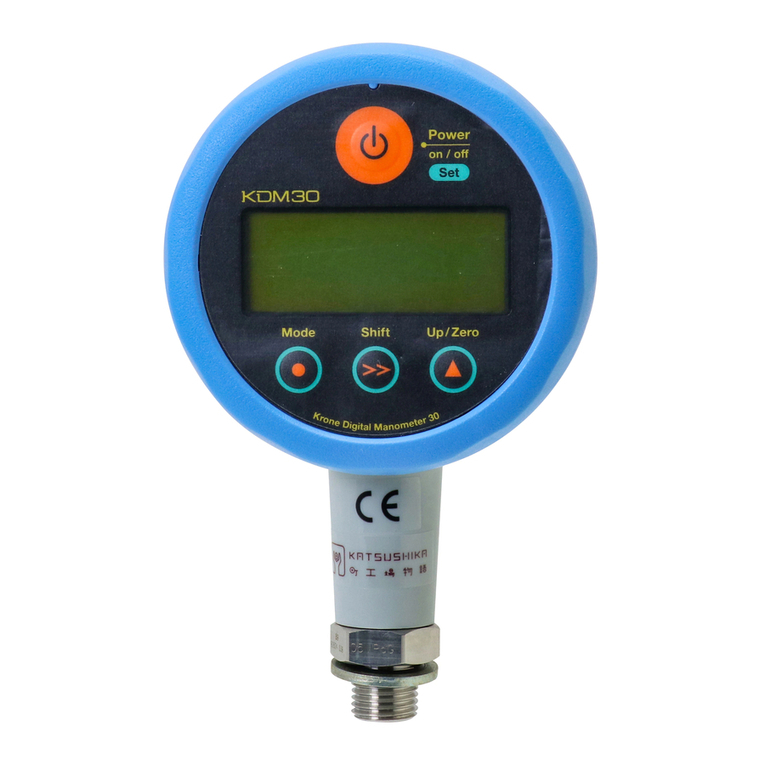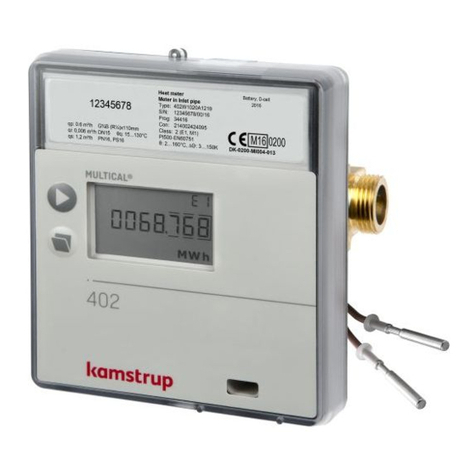DIALAB DIAcheck C1 User manual

Operation Manual
DIAcheck Series
C1 / C2 / C4
For In-Vitro Diagnostic use
Instrumentation and reagents for human coagulation and hemostasis
Copyright © 2018, Dialab GmbH, Austria
OPM Revision 4
Firmware V01.01.44
Issue Jun-2018

Dialab GmbH
Operator's Manual DIAcheck series Rev-4 Page 2
Updates
Operator's Manual
Version
Software
Version
1
1.01.42 (first release)
2
1.01.43
3
(minor correction on OPM)
1.01.43
4
1.01.45
Copyright Copyright © 2018 by Dialab GmbH; Neither the Operator's Manual
nor any part thereof may be copied, digitally processed or otherwise
transferred without written permission from Dialab GmbH. The
software for Dialab GmbH products is the intellectual property of
Dialab GmbH, which company retains all rights to usage of the
software. The purchaser of a DIAcheck series acquires rights of use
for this software
Trademarks Other product names used in this Operator's Manual are
trademarks of the respective companies.
Manufacturer Instrument is produced by
Dialab GmbH
Hondastrasse OBJ M55, IZ NOE SUED
A-2351 Wr. Neudorf
Austria
Phone: +43 (0)2236 660910-0
Fax: +43 (0)2236 660910-30
Internet: www.dialab.at
Warranty The DIAcheck series is warranted for a period of one year after
delivery or first installation. It covers any defects in material,
functionality or workmanship. The first installation must be
registered online to www.dialab-reg.com (see chapter
“Registration”)
The warranty expires in case of failures caused by
•Accidident, neglect maintenance & serivce, abuse or misuse.
•Using unauthorized reagents, consumables or spare parts
•Unauthorized service. Any repair or service must be performed
by authorized persons.

Dialab GmbH
Operator's Manual DIAcheck series Rev-4 Page 3
1. Introduction ........................................................................................................................................ 7
1.1 Symbols.......................................................................................................................................7
1.2 Views of the device ................................................................................................................. 8
1.3 Consumables / Accessories .................................................................................................9
1.4 Intended use........................................................................................................................... 10
1.4.1 Compare of DIAcheck series ...................................................................................................... 10
1.4.2 Test Methods....................................................................................................................................12
1.4.3 Specimen Collection ...................................................................................................................... 12
1.4.4 Principle of measurment.............................................................................................................13
1.4.5 Clotting method (PT, aPTT,..) .................................................................................................... 14
1.4.6 Chromogenic Method (Antithrombin): .................................................................................14
1.4.7 ImmunturbidimetriC Method (D-Dimer): ............................................................................14
1.5 Safety information ............................................................................................................... 15
1.5.1 Safety information for operation ............................................................................................. 15
1.5.2 Safety information for MATERIALS ........................................................................................15
1.5.3 Safety information regarding risk of health ........................................................................16
1.5.4 Safety information for cleaning, maintenance and servicing.......................................17
1.5.5 Electrical Safety............................................................................................................................... 18
1.5.6 Recycling of the instrument .......................................................................................................18
2. Installation of the DIAcheck series.............................................................................................19
2.1 Scope of delivery................................................................................................................... 19
2.2 Conditions of operation ..................................................................................................... 20
2.3 First Installation ................................................................................................................... 21
2.4 Switching ON and off ........................................................................................................... 22
2.5 Display PRotection Foil...................................................................................................... 23
2.6 External Thermal Printer.................................................................................................. 23
2.7 External Barcode Scanner................................................................................................. 23
2.8 TECAM SMART....................................................................................................................... 24
2.9 Registration............................................................................................................................ 25

Dialab GmbH
Operator's Manual DIAcheck series Rev-4 Page 4
3. Operation of the DIAcheck series................................................................................................26
3.1 Homescreen............................................................................................................................ 26
3.2 Input patient identification .............................................................................................. 27
3.3 Test selection......................................................................................................................... 28
3.4 Measurement......................................................................................................................... 29
3.5 System settings...................................................................................................................... 30
3.6 Test Settings........................................................................................................................... 34
3.7 Review results ....................................................................................................................... 36
4. Basis coagulation tests ..................................................................................................................37
4.1 Quickguide of PT Determination.................................................................................... 37
4.2 Quickguide of PT-B Determination................................................................................ 38
4.3 Quickguide of aPTT Determination............................................................................... 38
4.4 QuiCkguide of FIB Determination .................................................................................. 39
5. Ticket system.....................................................................................................................................40
6. SERVICE Functions...........................................................................................................................42
6.1 System Information............................................................................................................. 42
6.2 Optic Check............................................................................................................................. 43
6.3 System report ........................................................................................................................ 44
6.4 Adjust temperature ............................................................................................................. 45
6.5 Firmware Update.................................................................................................................. 46
6.6 Overview of Mainboard...................................................................................................... 47
6.7 Typical Failures..................................................................................................................... 48
7. Hidden Functions.............................................................................................................................49
7.1 Reset to factory default ...................................................................................................... 49
7.2 Login as admin ...................................................................................................................... 50
7.3 Change test protocol............................................................................................................ 50
8. Working with TECAM Smart.........................................................................................................52
9. Cleaning and maintenance...........................................................................................................53
9.1 General cleaning information.......................................................................................... 53

Dialab GmbH
Operator's Manual DIAcheck series Rev-4 Page 5
9.1 Cleaning ................................................................................................................................... 53
9.2 Decontamination.................................................................................................................. 53
9.3 Regular mainentance.......................................................................................................... 53
10. Appendix.............................................................................................................................................54
10.1 Barcode Guideline................................................................................................................ 54
10.2 Technical data ....................................................................................................................... 55
11. Index ....................................................................................................................................................56

Dialab GmbH
Operator's Manual DIAcheck series Rev-4 Page 6
List of figures
Figure 1: Top view.............................................................................................................................. 8
Figure 2: Rear view ............................................................................................................................ 8
Figure 3: Side view with Barcode Slot................................................................................................ 8
Figure 4: Determination of turning point in clotting method ............................................................. 14
Figure 5: Standard Delivery package............................................................................................... 19
Figure 6: System Information........................................................................................................... 25
Figure 7: Registration of DIAcheck series........................................................................................ 25
Figure 8: Homescreen DIAcheck series C4..................................................................................... 26
Figure 9: Input Patient ID ................................................................................................................. 27
Figure 10: test selection DIAcheck series C2/C4............................................................................. 28
Figure 11: test selection DIAcheck series C1 .................................................................................. 28
Figure 12: Screen during measurement........................................................................................... 29
Figure 13: Quickmenu DIAcheck series C2/C4................................................................................ 30
Figure 14: System settngs DIAcheck series C2/C4......................................................................... 32
Figure 15: Menu / System settings DIAcheck C1............................................................................. 33
Figure 16: Test setting 1................................................................................................................... 34
Figure 17: Test Setting 2.................................................................................................................. 35
Figure 18: Review results DIAcheck series C2/C4 .......................................................................... 36
Figure 19: Ticket System, LOGIN .................................................................................................... 40
Figure 20: Ticket System, Voucher.................................................................................................. 40
Figure 21: Ticket System, Input Code.............................................................................................. 41
Figure 22: Ticket System, TECAM SMART ..................................................................................... 41
Figure 23: System Information......................................................................................................... 42
Figure 24: Optic Check..................................................................................................................... 43
Figure 25: Screenshot of XFlash tool............................................................................................... 46
Figure 26: Mainboard ....................................................................................................................... 47
Figure 27: Admin Login .................................................................................................................... 50
Figure 28: Test Protocol................................................................................................................... 50
Figure 29: TECAM SMART.............................................................................................................. 52

Dialab GmbH
Operator's Manual DIAcheck series Rev-4 Page 7
1. INTRODUCTION
This device left the factory in fault-free condition regarding its safety and engineering
functionality. To maintain this condition and ensure risk-free operation, the operator
must comply with the safety warnings and information in this Operator's Manual.
Use the DIAcheck series only in compliance with the instructions in this
Operator's Manual. Otherwise, the manufacturer shall exclude the liability
for any damages to the DIAcheck series, patients or operators.
1.1 SYMBOLS
The following standard symbols are used in this manual:
Symbol Meaning Explanation
Courier Info Key on keypad
CAPS Info Screen message.
Read Indicates important information and tips.
Info Describes reaction of DIAcheck series to
operator input.
Warning
Risk of possible health damage or
considerable damage to equipment, if
warning is not heeded.
Danger Potential risk to operating personnel or
equipment due to electric shock.
Biohazard Equipment can be potentially infectious
due to the samples and reagents used.
Laser Radiation Avoid direct eye exposure

Dialab GmbH
Operator's Manual DIAcheck series Rev-4 Page 8
1.2 VIEWS OF THE DEVICE
FIGURE 1: TOP VIEW
FIGURE 2: REAR VIEW
FIGURE 3: SIDE VIEW
Home Screen
Coloured Touch Display
Complete area is prewarmed to 37°C
1 x Reagent position Ø24mm
1 x Reagent position Ø22mm
1 x Reagent position Ø22mm, stirred
2 x Reagent positions Ø13mm
20 x Cuvette incubation positions
4 x Cuvette measurement positions
(depend on C1/C2/C3 version)
5V: Power in
PC: LIS or PC
SERVICE: Software update
PRINTER: Serial printer
BARCODE: Handheld barcode scanner

Dialab GmbH
Operator's Manual DIAcheck series Rev-4 Page 9
1.3 CONSUMABLES / ACCESSORIES
Single cuvettes
Reagent adapter ∅24,5
22,5 mm
Stirring magnets, P=4
External CCD-Barcode Reader
only connectable, if no internal
Barcode-Reader is built-in
Thermal printer 60mm
TECAM Smart Software
Patient management, Monitoring,
Research, Statistics, Mirror print
function, LIS commuinication (ASTM-
1394)
Protection foil, Clean tissue, Pick-off

Dialab GmbH
Operator's Manual DIAcheck series Rev-4 Page 10
1.4 INTENDED USE
The DIAcheck series is designed to carry out coagulometric tests such as PT, PTT,
TT, fibrinogen, single factor tests, chromogenic and immunoturbidimetric tests
(for instance Antithrombin, D-dimer etc.) on human citrated plasma. The
instrument has to be used for the expected purposes and in perfect technical
condition, by qualified personnel, in working conditions and maintenance
operations as described in this document. It is designed for laboratory use or
clinical environment and trained users. It is not intended for home use.
1.4.1 COMPARE OF DIACHECK SERIES
The DIAcheck series include three different versions called C1, C2, C4
DIAcheck series
Family
C1 C2 C4
Reagent and Optic
block
prewarmed to 37°C
Cuvette prewarm 10x 20x 20x
Reagent prewarm,
24mm
1x 1x 1x
Reagent prewarm,
22mm
2x 2x 2x
Microtubes
prewarm
2x 2x 2x
Reagent stirrer No 1x 1x
Printer, RS232 Yes
Barcode Scanner,
RS232
Yes, external or integrated 1D Barcode scanner
LIS, USB Yes
Firmware Update,
USB
Yes
Measurement
Optic channels 1 2 4
Optic wavelength
620nm
(RED)
405nm
(UV)
405nm
(UV)
Cuvette, total volume Single, 75µL Single, 75µL Single, 75µL
Global Clotting Assays PT+aPTT+Fib+TT PT+aPTT+Fib+TT
PT+aPTT+Fib+TT

Dialab GmbH
Operator's Manual DIAcheck series Rev-4 Page 11
Special Clotting Assays - All factors All factors
Chromogenic Assays - AT, PC AT, PC
Latex enhanced Assays D-Dimer D-Dimer D-Dimer
Whole Blood Testing Yes (PT INR+%) No No
DOAC monitoring
(based on anti IIa and anti Xa)
No
HEP,LMW,APIX,
RIVX,EDOX,DABI
HEP,LMW,APIX,
RIVX,EDOX,DABI
Software features
Reagent Dual LOT
manage two different lots for each test
No Yes Yes
Reagent Barcode
Input LOT+Expiry or Positive LOT
detection
Yes Yes Yes
Test Calibration
LOT, expiry and upto 5 points for each
test
Yes Yes Yes
Patient Barcode
Input patient ID by barcode
scanner
upto 16char
Yes Yes Yes
Result Database
save recent 200 results onboard
No Yes Yes
Double Determination
Run patient twice and display mean
value
No Yes Yes
Stopwatch function
count up or down incubation time
1x 2x 4x
Result
Identification
Patient ID or sample ID or Auto ID
Yes Yes Yes
Real Time Clock
Yes Yes Yes
Change language
EN,
ESP, ITA, FR, DE - further on option Yes Yes Yes
Start test at reagent addition
No expensive starter pipette required
Yes Yes Yes
Visualize Reaction Curve
Tecmoni Software required
Yes Yes Yes
Test Calibration Service
Calibrate new lot of reagents by
barcode
Yes Yes Yes
Link to LIS over USB or network/ASTM
TECAM SMART Software required
Yes Yes Yes

Dialab GmbH
Operator's Manual DIAcheck series Rev-4 Page 12
1.4.2 TEST METHODS
Following test are provided to detect of the human coagulation system, which can
be bleeding or thrombosis and the monitoring of anti-coagulation drugs like
Heparin or Marcumar.
1.4.3 SPECIMEN COLLECTION
Type: Human citrated plasma
Collection: Veinvein puncture, 1:10 mixed sodium citrate 3.2%
(0.105M)
Centrifugation: 10min at 1500g
Storage: Max 4h after collection at room temperature
Bilirubin: < 50mg/dl
Hemoglobin: < 9000mg/l
Triglyceride: < 2500g/l
In case of differences to the boxinserts of the reagent, always follow the
instructions on the box insert.
Test Name Specimen Method
DIAcheck series
C1
C2
C4
PTB
Prothrombin Time
blood
clot
Yes
No
No
PT
Prothrombin Time
plasma
clot
Yes
Yes
Yes
APTT
Activated Partial
Prothrombin Time plasma clot Yes Yes Yes
FIB
Fibrinogen
plasma
clot
Yes
Yes
Yes
TT
Thrombin Time
plasma
clot
Yes
Yes
Yes
AT
Antithrombin
plasma
chromogen
No
Yes
Yes
DD
D-Dimer
plasma
immuno
Yes
Yes
Yes
PC
Protein C
plasma
chromogen
No
Yes
Yes
Factors
Factors II, V, VII, VIII,
IX, X, XI, XII
plasma clot No Yes Yes
AF2
anti IIa
plasma
chromogen
No
Yes
Yes
AF10
anti Xa
plasma
chromogen
No
Yes
Yes
HEP
Heparin
plasma
chromogen
No
Yes
Yes
LMH
Low molecular
heparin
plasma chromogen No Yes Yes
APIX
Apixaban
plasma
chromogen
No
Yes
Yes
RIVX
Rivaroxaban
plasma
chromogen
No
Yes
Yes
EDOX
Edoxaban
plasma
chromogen
No
Yes
Yes
DABI
Dabigatran
plasma
chromogen
No
Yes
Yes

Dialab GmbH
Operator's Manual DIAcheck series Rev-4 Page 13
1.4.4 PRINCIPLE OF MEASURMENT
The detection of plasma clotting is based on a photometric principle. No mechanical aids
like mixing bars are required. Blood plasma is filled into a cuvette. Special reagents are
added, which initiate the blood coagulation. The cuvette is transmitted by ultra violet light
during the coagulation process. When the sample starts to clot a change of light absorbance
is measured. The time from measurement start to change of light (turning point) is called
clotting time and expressed in seconds [s].
The conversion of coagulation time into a specific test unit is one using a linear, hyperbolic,
semi-logarithmic or double-logarithmic interpolation of the stored calibration points. The
current mathematical model is printed out in "TEST SETUP." Values outside the calibration
range are calculated by extrapolation and flagged as " * ".
Unit
Info
Decimal
places
Maximum
value
s
seconds
1
-
%
activity
1
180.0
U
units
0
999
INR
Int. ratio
2
30.00
R
ratio
2
30.00
NR
polish ratio
0
180
mg/dl
0
900
g/l
2
10.00
IE/ml
Int. Units
2
10.00
mg/l
2
10.00
µg/ml
3
7.000
ng/ml
0
7500
µg/l
0
7500
IU/mL
Int. Units
2
10.00
R = clotting time / normal time
NR = 100 *(normal time/clotting time)
INR = Ratio ISI (International Normal Ratio)
IU/mL = IE/mL = International Units (1.00 IU/mL = 100 % activity)

Dialab GmbH
Operator's Manual DIAcheck series Rev-4 Page 14
1.4.5 CLOTTING METHOD (PT, APTT,..)
FIGURE 4: DETERMINATION OF TURNING POINT IN CLOTTING METHOD
The final reaction in the coagulation cascade is the transformation of fibrinogen
into fibrin catalyzed by thrombin. Fibrin formation results in clouding (higher
turbidimetric level) in the sample, which is measured by the photometer and
stored as the extinction. The result in seconds is the time from the start of the
reaction to the time of half rate of change (halfpoint).
1.4.6 CHROMOGENIC METHOD (ANTITHROMBIN):
The change of optical signal is not caused by clot reaction, but by the release of
color particles (pNA) which causes a yellow color. The change of color is measured
at 405nm and expressed as “dE/60sec” and proportional to the concentration or
activity of analyte.
1.4.7 IMMUNTURBIDIMETRIC METHOD (D-DIMER):
The change of light is caused by Antigen – Antibody reactions, which scatter the
light. The antibodies are linked to latex particles to amplify the optical reaction. The
change of light is proportional to the concentration of antigen like D-Dimer and
expressed as dE/120sec

Dialab GmbH
Operator's Manual DIAcheck series Rev-4 Page 15
1.5 SAFETY INFORMATION
1.5.1 SAFETY INFORMATION FOR OPERATION
Use only the cleaning and rinsing liquids approved by the manufacturer. Failure
to do so could result in faulty measurements or malfunctions of the DIAcheck
series.
Prevent reagents from leaking into the Analyzer. Failure to do so may
result in damage to the instrument and result in expensive maintenance work!
Carry out control measurements at regular intervals to ensure that the analyzer
continues to function faultlessly.
If the instrument is used in a manner not specified by the manufacturer, the
protection impairment could be affected!
Please read the Operation manual in its entirety prior to operation, in order to
ensure a high level of performance and to avoid errors by user.
1.5.2 SAFETY INFORMATION FOR MATERIALS
Use only Dialab approved and labeled material like cuvettes, spare parts or
reagents for which the instrument is intended and validated for.
Consumables like cuvettes or yellow tips are intended as single-use items.
Multiple use may result in false results due to contamination.
Follow the
instructions on
the reagent package circulars. Incorrect handling may result
in falsified results.
Do not use materials after their
date of expiry. Especially expired IVD
reagents may cause false results.
Check
correct function of manual pipette every year to ensure accurate
results.

Dialab GmbH
Operator's Manual DIAcheck series Rev-4 Page 16
1.5.3 SAFETY INFORMATION REGARDING RISK OF HEALTH
Bleeding or Thrombosis
Diagnosis and medication of human coagulation system based on false
results may lead to critical bleeding or thrombosis. For risk reduction it is
essential to follow the hints below.
Regarding risks:
Caused by faulty condition of the instrument, reagent or calibration data:
Perform a quality control before running a series of patient samples or after
reconstitution of a vial or after test calibration to eliminate failure of
theinstrument, reagent or calibration data.
Caused by imprecise pipet:
Validate your pipette every year and label it with the last date of validation.
Caused by false assignment of target values:
Run interlaboratory quality control standards.
Caused by purified water:
Use only high purified water to reconstitute controls or reagents. Check
visualy that the water is free of any particles.
Caused by expired reagent:
Do not use IVD reagents or other materials after their expiry date.
Infectious Material
Consider all
surfaces and materials which might be in contact with plasma or
other biological liquid as potentially contaminated with infectious material.
Avoid contact:
Wear medical infection grade protective gloves for all works involving
potential contact with infe
ctious material and use each pair of gloves only.
Use a hand disinfectant product, e.g. Sterillium®, to disinfect your hands after
completion of the work.
Dispose:
Dispose i
nfectious materials, such as cuvette waste and liquid waste, in
compliance with your local regulations governing for infectious materials.
Hygienic conditions:
Validate your hygienic management system according to German GLP federal
bureau for good laboratory practice or similar quality standard. Any waste
material must be
considered as potentially infectious. Direct contact must be
avoided. Protective gloves during operation, service or cleaning are required.
LED Light Radiation
Avoid direct eye exposure.
The internal CCD barcode scanner is assigned to
EN 55022:2010 class B, EN 62471:2008.

Dialab GmbH
Operator's Manual DIAcheck series Rev-4 Page 17
1.5.4 SAFETY INFORMATION FOR CLEANING, MAINTENANCE AND SERVICING
Authorized service only!
Carry out only the measures listed in this operator’s manual for maintenance,
repair and replacement. Improper manipulation of the device will void the
manufacturer's liability obligations and may make service calls necessary,
including payments which are not covered by warranty. Only the authorized
Customer Service may carry out servicing
. Only original replacement parts
may be used. Before doing any servicing on the instrument,
it is very
important to thoroughly disinfect all possibly contaminated parts.
Cleaning and decontamination
Before the instrument is removed from the laboratory for disposal or
servicing, it must be decontaminated. The procedure is described in chapter
“Cleaning and maintenance” and should be performed by authorised well-
trained personnel only, observing all necessary safety precautions
Cleaning certificate required!
Instruments to be returned have to be accompanied by a decontamination
certificate issued
by the responsible laboratory manager. If a
decontamination certificate is not supplied, the returning laboratory will be
responsible for charges resulting from non-a
cceptance of the instrument by
the service centre, or from authority’s interventions.
Regard all surfaces and materials which might be in contact with plasma or
other biological liquid as potentially contaminated with infectious material.
Avoid any direct contact with decontaminants or disinfections.

Dialab GmbH
Operator's Manual DIAcheck series Rev-4 Page 18
1.5.5 ELECTRICAL SAFETY
Precautions:
Avoid spilling liquids into system. In case of spilled liquids disconnect the
system from power, then clean and dry all contaminated parts.
Remove the power cord before opening the instrument.
Do not touch any electronic parts during operation.
Do not operate system without proper connection to grounding.
Never intentionally interrupt protective ground contacts.
Never remove housing elements, protective covers or secured structural
elements, since doing so could expose parts carrying electric current.
Make sure surfaces such as the floor and workbench are not moist while
operating the device.
Check
electrical equipement regulary. Defective leads or socket must be
replaced without delay.
Connection to power:
Instrument is in compliance with IEC 61010-1 / 61010-2 and classified as
portable instrument, class II. It does not require a safety
connection to
electrical earth.
Make sure the operating voltage setting is correct before connecting the
device to the power mains.
Read chapter “installation” about electrical
conditions.
The power cord always has to be easily accessible during normal
operation.
EMC Statement:
The DIAcheck series it suitable for use in domestic and industrial
establishments. It was tested according to standards IEC 61326-1:2013 and
IEC 61326-2-6:2013, It is in compliance with the requirements
Emission: EN 55011, Class B, Group1
Immunity: EN 6100-4 -2,3,4,5,6,8
The maximum length of cables to external devices like printer, barcode or LIS
must be less than 3m to keep compliance with EMC
1.5.6 RECYCLING OF THE INSTRUMENT
The system must be decontaminated before being transported to an authorized
disposer for electrical waste.
The instrument must be recycled as required by guideline WEEE (2002/96/EG).

Dialab GmbH
Operator's Manual DIAcheck series Rev-4 Page 19
2. INSTALLATION OF THE DIACHECK SERIES
2.1 SCOPE OF DELIVERY
Contents of standard delivery package:
•1 Pc DIAcheck instrument
•1 Pc Power Supply
•2x100 Pcs Single cuvettes
•5 Pcs Reagent container, Ø22,5mm
•5 Pcs Reagent tubes, Ø11mm
•1 Pc Operation Manual (not on picture below)
•1 Pc Display protection foil
•1 Pc System ID-Card
FIGURE 5: STANDARD DELIVERY PACKAGE (PICTURE WILL FOLLOW)
Optional available:
•External Thermal Printer
•External Barcode scanner
•Printer cable
•TECAM Smart Software

Dialab GmbH
Operator's Manual DIAcheck series Rev-4 Page 20
2.2 CONDITIONS OF OPERATION
Ambient conditions:
Operating Temperature
15°C to 30 °C
Humidity
< 70% rel. humidity
Elevation above NN sea level
< 3,000m
Free of dust
Grade 2
Impact resistance
According to IEC/EN 61010-1, 8.2.2
Not allowed
Vibrations, direct sun light and direct exposure
to air condition.
Electrical conditions:
100-240 VAC, 47 - 63Hz, no earthing required (Class-2)
Electrostatic Discharge (ESD):
No special requirements for ESD protection (shoes etc.)
Storage conditions:
0 - 50°C, max. 12 months in original package.
Transport conditions:
No special conditions required. The general regulations for transport can
be used.
Hygienic conditions:
Validate your hygienic management system according to international
applied Good Laboratory Practice (GLP) or similar quality standard. Any
waste material must be considered as potentially infectious. Direct contact
must be avoided. Protective gloves during operation, service or cleaning
are required.
Device environment:
No special requirements. Instruments is suitable for or use in domestic and
industrial establishments.
This manual suits for next models
3
Table of contents
Other DIALAB Measuring Instrument manuals
Popular Measuring Instrument manuals by other brands
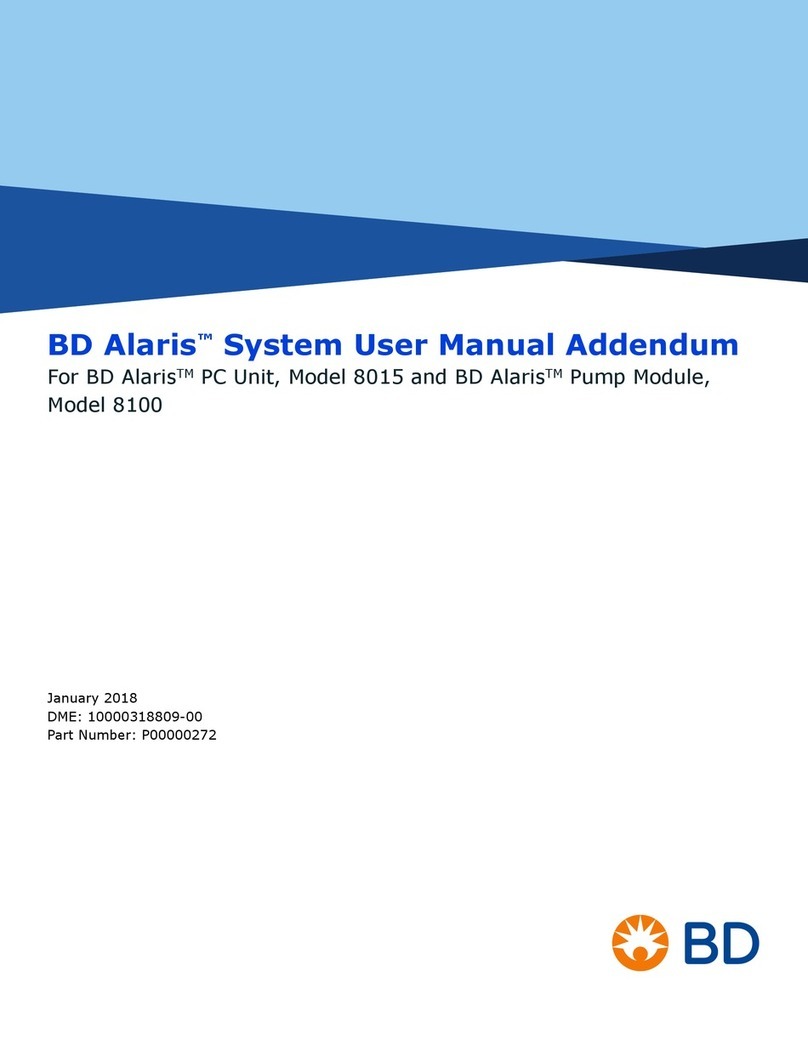
BD
BD ALARIS 8015 User manual addendum
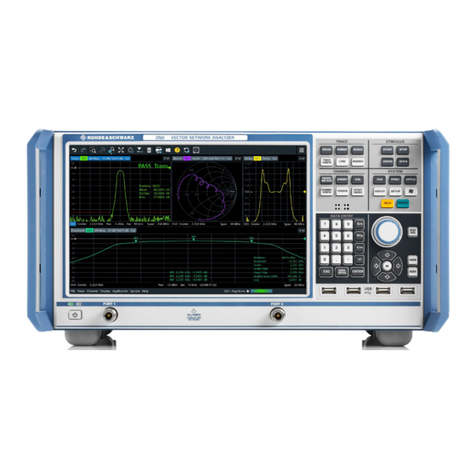
Rohde & Schwarz
Rohde & Schwarz R&S ZNB user manual
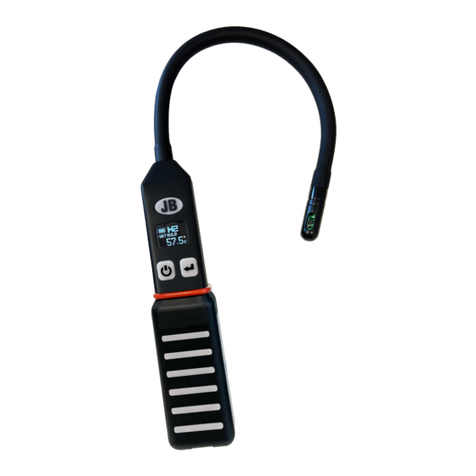
JB INDUSTRIES
JB INDUSTRIES WH-1 operating manual
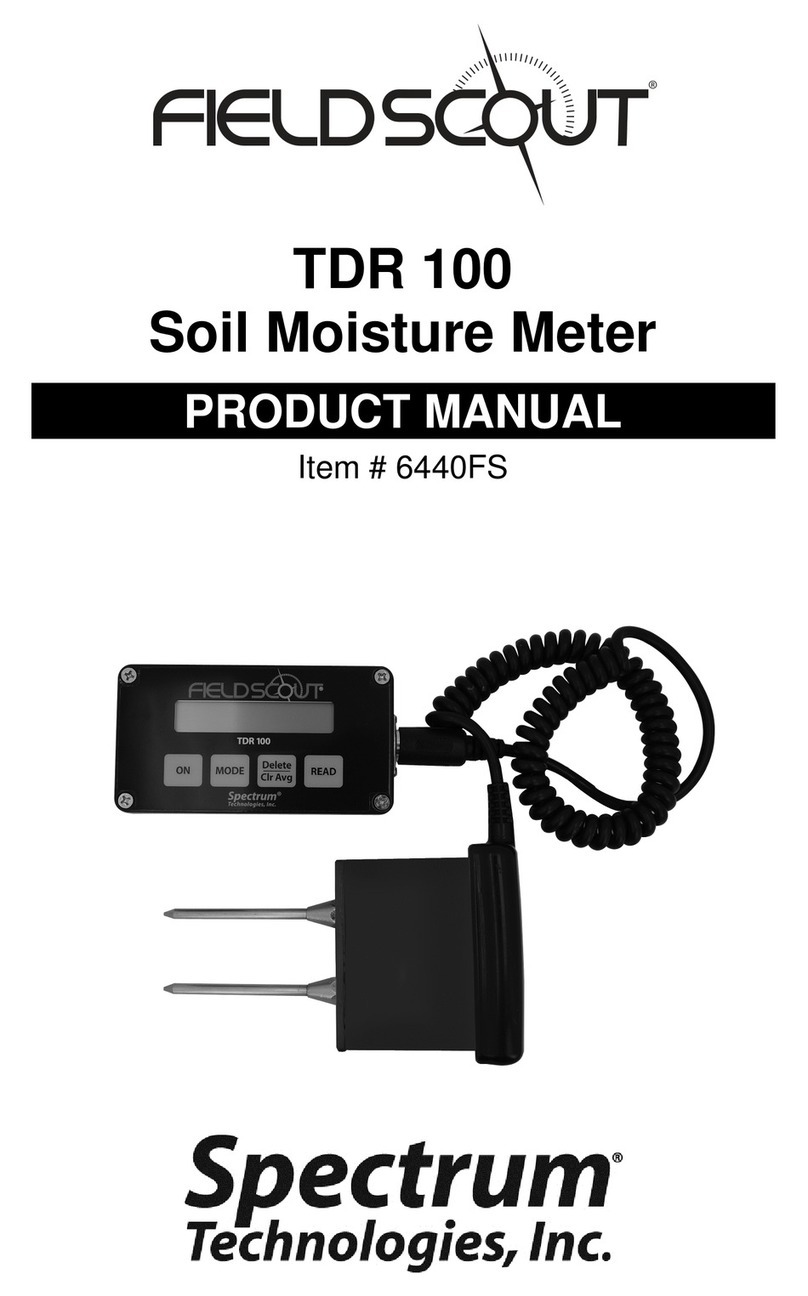
Spectrum Techniques
Spectrum Techniques fieldscout TDR 100 product manual
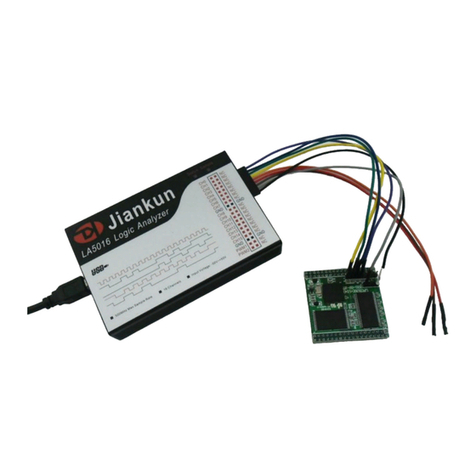
Kingst
Kingst LA1016 user guide
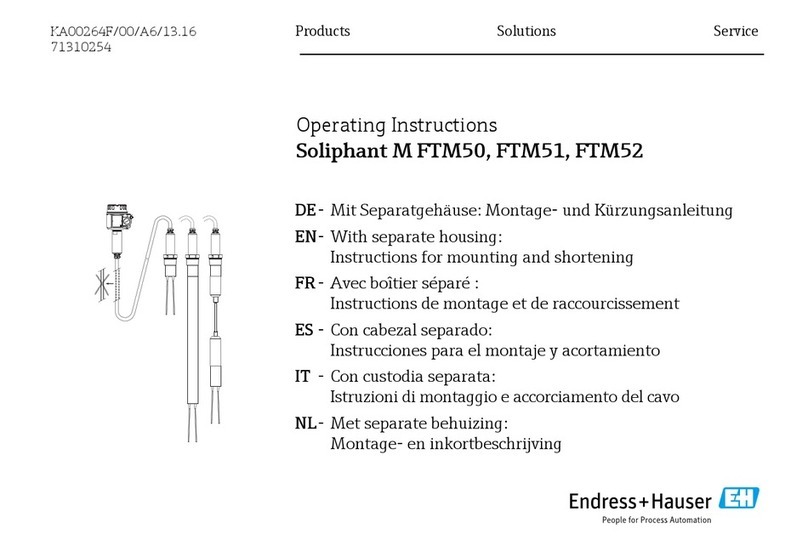
Endress+Hauser
Endress+Hauser Soliphant M FTM50 operating instructions

